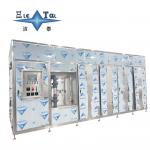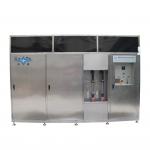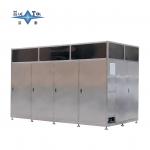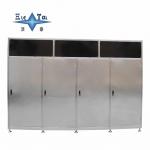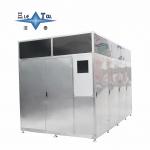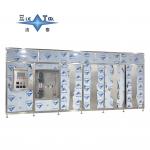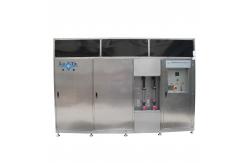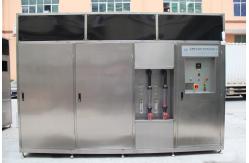Ozone-based Advanced Oxidation Processes (AOPs) are cutting-edge
solutions for treating recalcitrant pollutants—organic compounds
resistant to conventional methods, such as pharmaceuticals,
pesticides, and industrial solvents. Ozone (O₃), a powerful
oxidant, is generated on-site by passing air or oxygen through
high-voltage electrodes, then injected into wastewater to initiate
radical-driven reactions that break down complex molecules into
harmless byproducts like CO₂ and H₂O.
The system typically includes an ozone generator, contactor reactor
(e.g., bubble column or packed tower), and residual ozone
destructor. In AOPs, ozone may be combined with hydrogen peroxide
(O₃/H₂O₂) or UV light (UV/O₃) to produce hydroxyl radicals (•OH),
which have a higher oxidation potential (2.8 V) than ozone alone,
enabling non-selective degradation of even highly stable
contaminants.
Advantages & Applications:
- Rapid Degradation: Ozone reacts instantly with many pollutants, reducing treatment
time to minutes compared to hours in biological systems. It is
widely used in municipal wastewater reuse plants, semiconductor
manufacturing (removing micro-pollutants), and landfill leachate
treatment.
- No Secondary Pollution: Ozone decomposes into oxygen, leaving no harmful residues. Unlike
chemical coagulants, it does not generate sludge.
- Flexible Integration: AOPs can be applied as a standalone process or combined with
biological/physical treatments for multi-stage purification.
Challenges:
- High Energy and Cost: Ozone generation requires significant electricity (0.6-1.2 kWh/kg
O₃), and the system demands corrosion-resistant materials
(stainless steel, titanium) due to ozone’s reactivity.
- pH and Temperature Dependence: Optimal performance occurs at pH 7-9, and efficiency decreases in
cold water (below 10°C).
- Safety Considerations: Ozone is toxic at high concentrations, necessitating strict
safety protocols for storage and handling.
